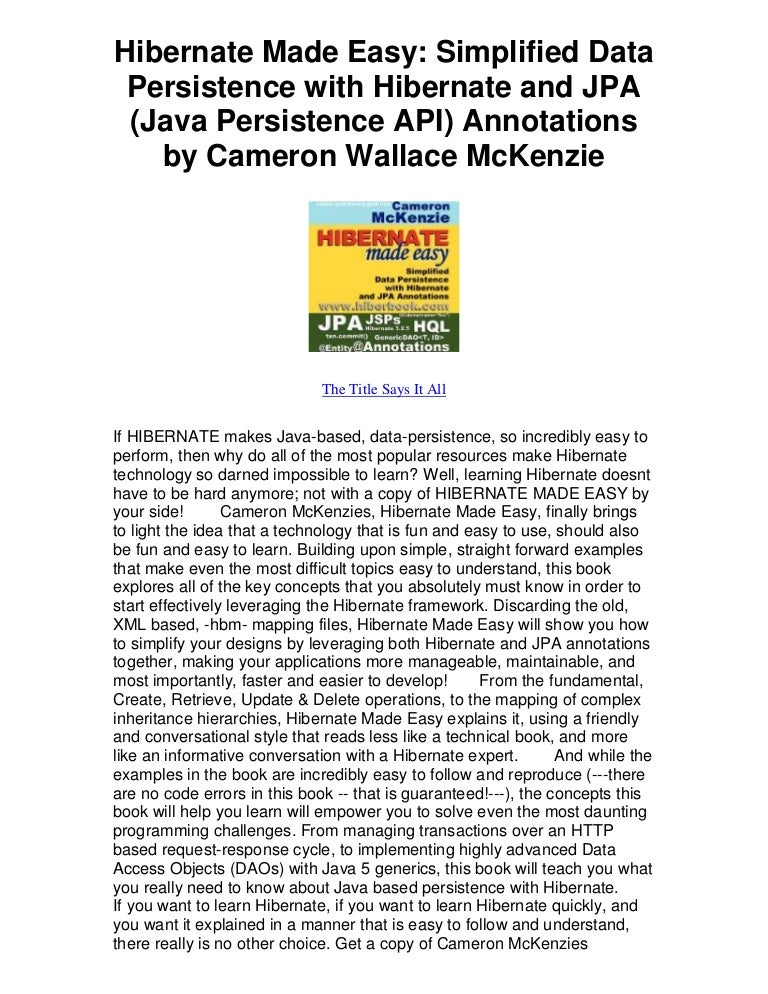

#HIBERNATE PERSISTENCE EXAMPLE CODE#
Unfortunately, this also affected the code and configuration files. As part of the transformation from Java EE to Jakarta EE, the Java Persistence API (JPA) was renamed to Jakarta Persistence API (JPA).

several provider-specific configuration parameters.Īs you can see, you can configure a lot of things in this file.
#HIBERNATE PERSISTENCE EXAMPLE HOW TO#
how to create and validate the database schema,.the data source you want to use to connect to your database,.the persistence provider that shall be used at runtime,.how these classes shall be mapped to database tables,.which managed persistence classes are part of a persistence unit,.The persistence.xml file defines one or more persistence units, and you can configure things like: And I thought it’s also something that I should share here on the blog. So, it shouldn’t surprise you that I’m recording a detailed lecture about it for my upcoming JPA for Beginners Online Training. That makes it one of the most important files of your persistence layer. In JPA, the persistence.xml file is the central piece of configuration. It's important when you're programming your Java application that you're aware of the state of the objects you're working with in relation to the database.Get access to all my video courses, 2 monthly Q&A calls, monthly coding challenges, a community of like-minded developers, and regular expert sessions. This object was persistent at one point in time and can be reattached to a valid Hibernate session when needed. A persistent object whose session has been closed is an example of a detached state. These are objects that exist in the database, but Hibernate has lost a connection with them. The last state is called the detached state. For example, if a property changes on a persistent object, Hibernate automatically updates the database. Persistent objects are objects that exist in the database, and they are managed by Hibernate. From transient, it can become a persistent state. At that point, Hibernate assigns this object an identifier, and it's no longer in a transient state. In order to persist this type of object, we must explicitly ask this session to save the object to the database. The database has no knowledge of the object. The first state, the transient state, happens when objects exist in memory. Objects can be in three states of persistence. Only objects that contain instance variables can be stored in a relational database included in Hibernate.


The objects are marked as persistent, which means that they will be recognized by Hibernate, but there might be objects that are not recognized by Hibernate. What is data persistence in Hibernate? Hibernate works with our existing Java object model.


 0 kommentar(er)
0 kommentar(er)
